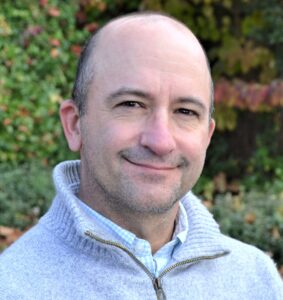(c) Connecticut Explored, Summer, 2023
By Jason Mancini
Subscribe/Buy the Issue!

Dr. Jason Mancini is executive director of Connecticut Humanities and former executive director of the Mashantucket Pequot Museum and Research Center.
Fort Island in the Great Salt Pond of Block Island, Rhode Island, is an island within an island. That’s where I spent more than a dozen summers conducting archaeological excavations of a 17th-century Indian trading post turned English fort. There I learned about how a small island outpost in the western Atlantic Ocean was central to trading relationships between Native and European peoples. These relationships were forged and broken over wampum, furs, and metal tools and connected people from vastly different cultures, economies, and geographies.
Years later, while studying the presence and global mobility of Indian whalemen on Yankee whaleships, I became keenly aware that islands – the Azores, Tristan da Cunha, Oahu, Floreana, Tahiti, New Zealand, and many others – were essential to survival as these men traveled the waters of the world, often for years at a time. While islands seem to exist alone in space, they are in fact the cultural crossroads that connect our world through the exchange of ideas, economies, and human relationships.
For centuries Connecticans traveled, traded, explored, and visited islands across the globe. They brought back people (free and unfree), commodities, and objects that shaped and defined Connecticut and the world, sometimes quite literally. For example, in 1809, Capt. Caleb Brintnall returned to New Haven on the ship Triumph after a two-year trading voyage to China. Along the way, a young Hawaiian boy, Henry Opukaha’ia, joined the crew. Opukaha’ia soon after inspired the creation of the Foreign Mission School in Cornwall for the purpose of “civilizing” Indigenous peoples around the world. In another example, by the early 1820s, Stonington had become the global epicenter of commercial seal hunting. That success was tied to sealing in the Falkland Islands, but when seals there were overharvested, it was Capt. Nathaniel Palmer of Stonington who discovered the continent of Antarctica in search of new hunting grounds.
Connecticut is not just a departure point but a destination, too. Since World War II, many people from Puerto Rico and other West Indies islands migrated to Connecticut as agricultural laborers or in pursuit of other opportunities. Since then, these communities have grown and now thrive in cities and towns across the state. Similarly, Connecticut is now also home to one of the largest populations of Cape Verdeans in the United States.
So, the way we view islands may have changed over the past century. No longer just the literal cultural crossroads dotting the ocean, for some, “islands” takes on a more metaphorical significance. The manner in which Connecticans tend to fiercely protect the autonomy of each of its cities and towns sometimes creates the illusion that the state exists as a conglomeration of 169 unique “islands.” To remedy that, perhaps it’s time we do some “island hopping” and explore the histories and cultures across our communities, the objects and stories in our museums, and the ideas that will continue to shape our renaissance. You might begin by learning more about Opukaha’ia at Cornwall Historical Society; Palmer, sealing, and Antarctica at Stonington Historical Society; and the West Indian community at Connecticut Historical Society. Attend a powwow on the Mohegan or Pequot reservations and the Puerto Rican Day Parade in Hartford, and keep up with other opportunities at ctvisit.com.
Dr. Jason Mancini is executive director of Connecticut Humanities and former executive director of the Mashantucket Pequot Museum and Research Center.
